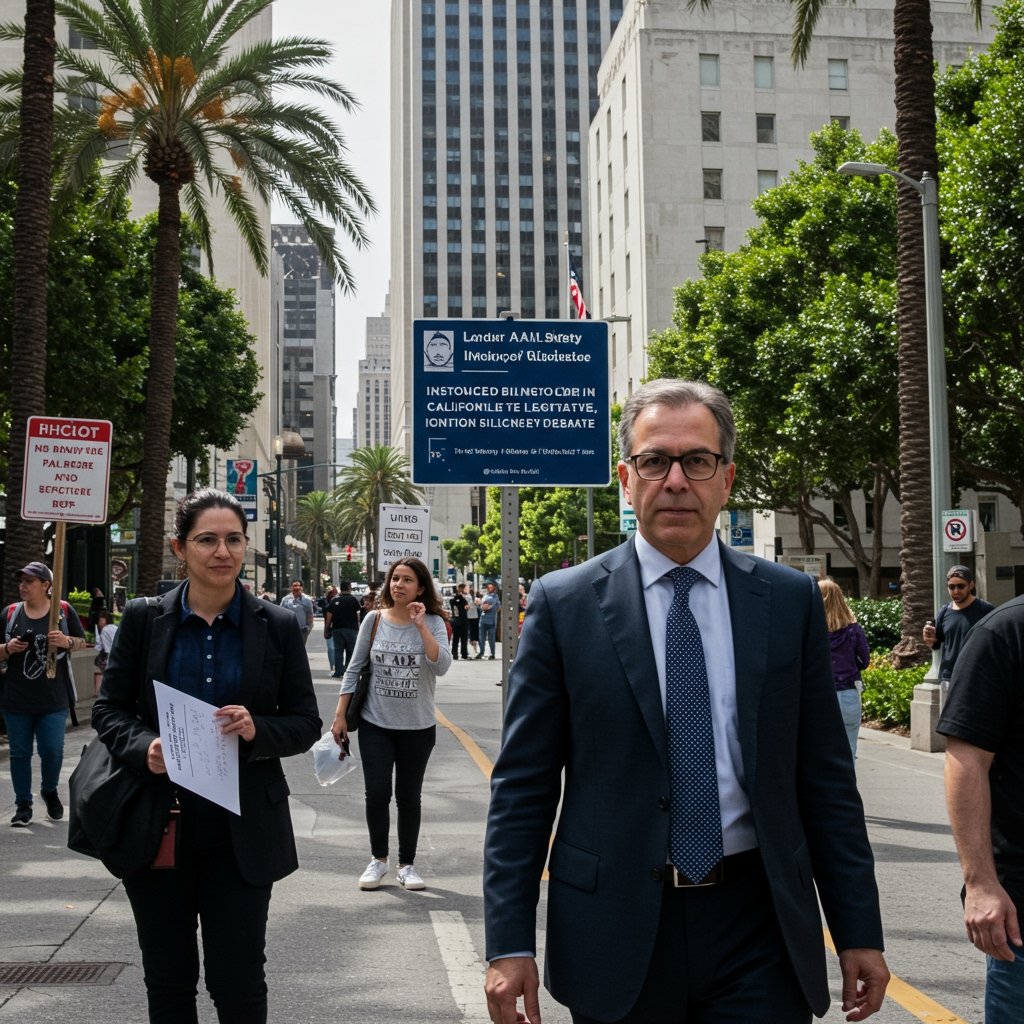California Legislators Seek AI Safety Regulation
SACRAMENTO, CA – In a significant move reflecting growing concerns over the rapid advancement of artificial intelligence, Assemblymember Sarah Chen formally introduced comprehensive state-level legislation aimed at regulating advanced AI models. The bill, designated as Assembly Bill 789 (AB 789), was filed in the California State Legislature on February 24, 2025. Its introduction marks a pivotal moment in the state’s grappling with the complex challenges posed by cutting-edge AI technologies, particularly those developed and deployed within its borders, home to the global epicenter of AI development, Silicon Valley.
AB 789 is designed to establish a robust framework for state oversight, focusing squarely on the potential risks associated with powerful AI systems. Proponents of the bill argue that existing regulations are insufficient to address emerging threats ranging from algorithmic bias and privacy invasions to potential societal disruptions and safety hazards posed by increasingly autonomous AI capabilities.
Key Provisions of AB 789
The proposed legislation is far-reaching, incorporating several key provisions intended to inject a degree of accountability and transparency into the development and deployment lifecycle of advanced AI models. At the forefront is a requirement for mandatory pre-deployment safety audits. Under this provision, developers of AI models exceeding a specific threshold – defined in the bill as models with more than 100 billion parameters – would be legally required to conduct rigorous safety evaluations before making these systems publicly available or integrating them into critical infrastructure. The 100-billion-parameter threshold targets the largest and most complex AI models currently being developed, often referred to as large language models or foundation models, which are seen as posing the highest potential for widespread impact and unforeseen risks due to their emergent capabilities.
Beyond safety audits, AB 789 also mandates significant disclosure requirements. Developers would be compelled to provide detailed information regarding the datasets used to train their AI models. This includes disclosing the nature and source of the training data, which advocates argue is crucial for identifying potential biases embedded within the models that could lead to discriminatory outcomes in areas like hiring, lending, or criminal justice. Furthermore, the bill requires disclosure of known or potential biases identified during development or testing, pushing companies towards greater transparency about the limitations and risks inherent in their AI systems.
To oversee these new requirements and ensure compliance, AB 789 proposes the creation of a new state entity: the California AI Safety Office. This office would be endowed with significant oversight and enforcement powers, including the authority to investigate potential violations, levy fines, and potentially halt the deployment of AI models found to be non-compliant or posing unacceptable risks. The establishment of a dedicated state office signals California’s intention to build specialized expertise in AI regulation, acknowledging that traditional regulatory bodies may lack the technical understanding required to effectively govern this rapidly evolving field.
Stakeholder Reactions and Political Landscape
The introduction of AB 789 has immediately drawn sharp reactions from various stakeholder groups, highlighting the deep divisions surrounding AI governance. The bill has garnered strong support from consumer advocacy groups across California. These organizations view the legislation as a necessary step to protect the public interest, arguing that the pace of AI development has outstripped the legal and ethical guardrails needed to ensure safety, fairness, and accountability. They emphasize the potential harms to individuals and society if powerful AI is left unregulated, praising the bill’s focus on mandatory audits and transparency as essential consumer protections.
Conversely, the bill is facing significant resistance from tech industry lobbyists, particularly those representing companies based in Silicon Valley. Industry groups argue that AB 789’s requirements are overly burdensome, potentially stifling innovation and placing California-based AI companies at a competitive disadvantage. They express concerns that mandatory pre-deployment audits could slow down the release of new technologies and that broad disclosure requirements might force companies to reveal proprietary information about their models and training data. Some industry representatives also argue that AI regulation should primarily be handled at the federal level to avoid a patchwork of state laws that could create confusion and complexity for businesses operating nationwide.
The debate surrounding AB 789 is expected to be intense, pitting public safety concerns against economic competitiveness and the desire for regulatory certainty.
The Path Ahead for AB 789
The legislative journey for AB 789 is just beginning. The bill is currently scheduled for its first committee hearing on March 10th. This hearing will provide the initial opportunity for proponents, opponents, and the public to voice their perspectives before state lawmakers. The committee process will involve detailed scrutiny of the bill’s language, potential amendments, and further debate on its feasibility and necessity.
California, as a global leader in technology and innovation, often sets precedents that influence policy discussions in other states and even at the federal level. The outcome of the debate over AB 789 could therefore have implications far beyond California’s borders, shaping the national conversation on how to effectively regulate artificial intelligence while fostering its potential benefits. The legislative process for this landmark bill is anticipated to be closely watched by industry observers, policymakers, and the public alike, as it navigates the complex intersection of cutting-edge technology, public safety, and economic interests.



















